Four
THE MILITARY COMES TO GLENDALE
Glendale was profoundly changed during the years of World War II. Construction of Thunderbird Field and Luke Field, and their subsequent use as training facilities, brought thousands of people to the area. The people of Glendale opened their homes to the new arrivals to provide rental housing for them. Children were doubled up to make a room available and garages were turned into apartments. The town responded to the influx by growing into a city. School enrollment swelled to over 3,000, and by 1950, the city budget was ten times the $31,000 budget of 1940.
When Glendale went to war, the citizens left no stone unturned to protect the town. Local American Legion members and other civilian volunteers, after working their jobs all day, spent many a night with their hunting rifles and shotguns ready to ward off intruders at municipal facilities such as the sewage plant on west Glendale Avenue. The women of Glendale brought coffee, sandwiches, and other refreshments to these guards. But just like the men, even though everyone knew them, the women had to recite the night’s password to be recognized as friend and not saboteur. The treatment of some, but not all, of the Glendale residents of Japanese ancestry is much less noble.
After the war, in 1945, Glendale tried to return to “business as usual,” but times had irrevocably changed. Thunderbird Field became the site of the American Institute for Foreign Trade (now Thunderbird—The Garvin School of International Management). As the population grew, the city began to annex land to the north and west and integrate new construction with the existing city. When the Office of Price Administration expired in 1946, and with it price controls on most everything, there was the inevitable rise in prices. Few took notice, however, because there was so much pent-up demand for consumer goods and so much available in the postwar years: cars, washing machines, radios, televisions, and all those foodstuffs that so recently had been rationed. With growth came other changes. Traffic signals were installed on Glendale Avenue, Glendale’s own radio station (KRUX) started broadcasting, a frozen food–locker plant was built, and a modern new theater (the Glen) opened. Another change was the closing of small family markets as grocery chains took over the business. By the 1950s, many Glendale pioneers had passed away, leaving the city to a younger and newer generation.

Construction of Thunderbird Field began in January 1941. The airfield was part of the U.S. Army’s Civilian Pilot Training Program, whose goal was to increase the number of trained pilots in America in case the country became involved in the war raging at that time in Europe. Thunderbird was a civilian contract school operated by Southwest Airways and supervised by army air force personnel. The first class of cadets, 57 strong, arrived in March 1941. They received 65 hours of flying training and 109 hours of ground-school instruction over a period of nine weeks. After that, they may have gone on to more advanced training at another airfield. By the time Thunderbird closed in June 1945, over 10,000 men had trained there as well as 15 classes of Chinese Air Force cadets. The plane they learned in was the bi-wing Boeing PT-17, popularly known as the “Stearman.” In this 1946 image of the field, the resemblance of the building layout to the Native American concept of the mythical thunderbird can be seen. At the bottom, the control tower forms part of the tail of the thunderbird.

An instructor at Thunderbird Field checks out student pilots prior to takeoff. The bi-wing training planes, Boeing PT-17 Stearmans, were painted yellow with red, white, and blue tail markings. Known as “Thunderbirds,” the planes starred in a 1942 motion picture Thunder Birds: Soldiers of the Air, with Preston Foster and Gene Tierney. The movie was filmed in, around, and above Glendale and vicinity.

Housing was not provided to civilian instructors or student officers at Thunderbird Field during World War II. Consequently, men such as instructor Bill Stedman had to find a room with a local family. Nearly every available room in the area was rented. This served the dual purpose of providing much needed housing for the fliers and extra income for the households. Stedman is standing in front of the Charles “Charlie” Pitts home, where he had a room.
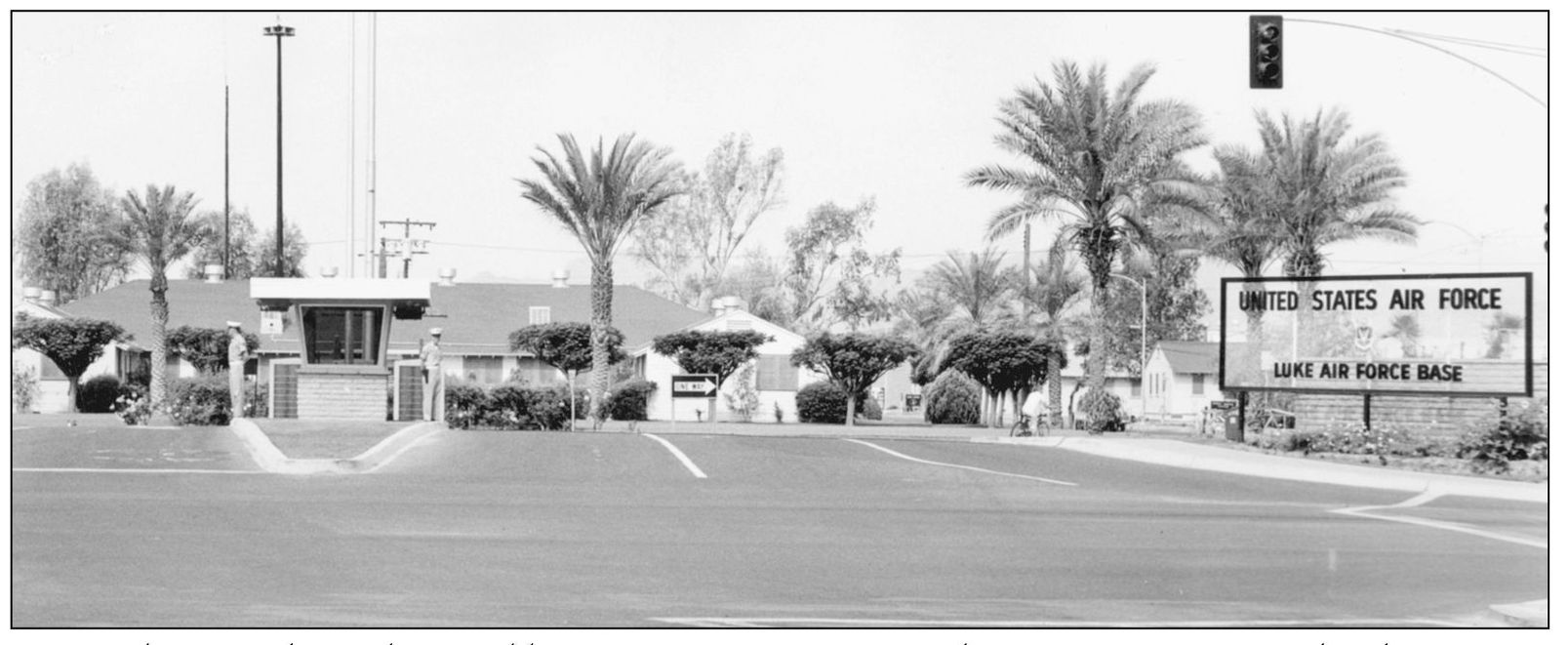
In March 1941, the Del E. Webb Construction Company began excavation in the desert west of Glendale for the first building at Luke Field, now Luke Air Force Base. By mid-June, the first runway was operational and the first class of pilots was training. The field was named for Arizona’s World War I ace pilot, Lt. Frank Luke Jr., who scored 18 aerial victories before being killed at age 21. The airbase was an advanced training facility, the largest fighter-training base in the Air Corps. Today it is still an advanced training base for F-16 fighters.
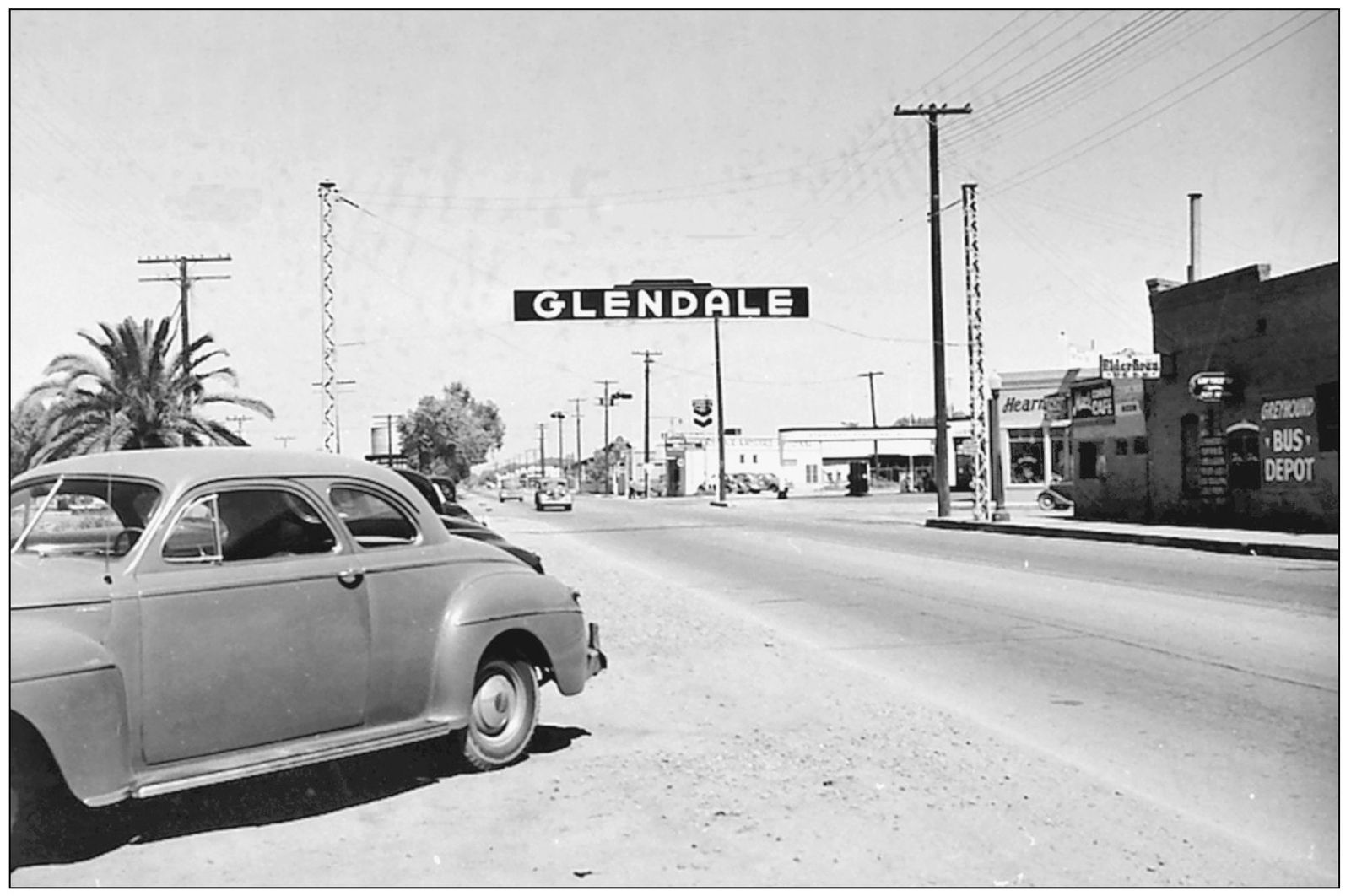
In the 1940s, Glendale welcomed travelers on Grand Avenue at its intersection with Glendale and Central (Fifty-ninth) Avenues with a large neon sign. To the right is Mac’s corner, which housed the Greyhound bus depot as well as Mac’s Corner Café. Across Glendale Avenue is Hearn’s Second Hand Store, and further down the road is a Standard Oil station. Hearn’s and Standard Oil gave way to the city’s Municipal Office Complex in the 1980s. The sign was removed in August 1951, having lasted a scant dozen years.

Three of the Mondo girls and their friend have their pictures taken at the Mondo Farm in Glendale in the 1940s. John Mondo was born in the Punjab district of India in 1892 and immigrated to California in 1909. In 1934, he moved to the Glendale area and purchased 40 acres of land that formed the nucleus of his successful vegetable farm, which he operated until 1959. The girls, from left to right, are Jean Mondo, Margie Mondo, Helen Mondo, and Earline Smith.
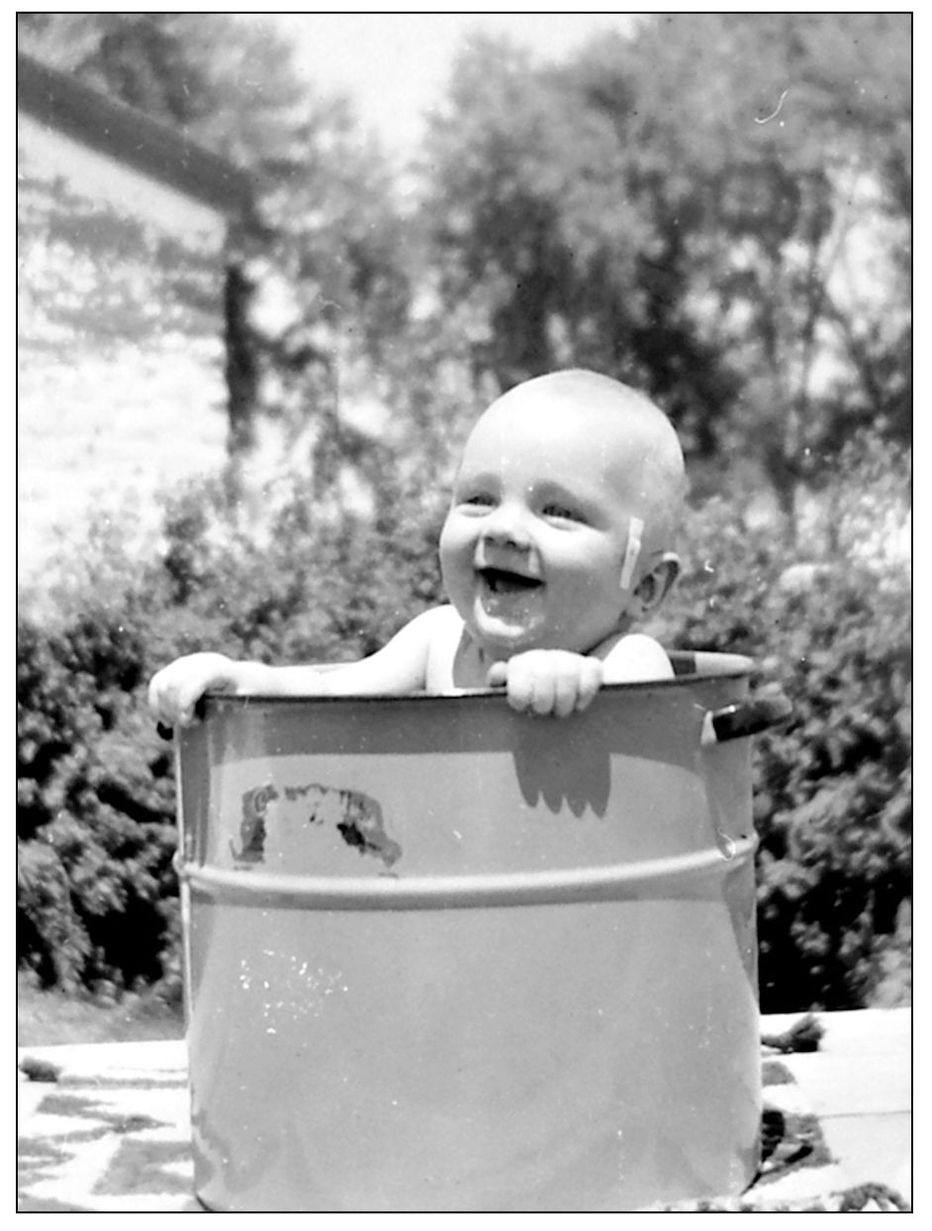
Playing in an irrigation ditch or in the flood irrigation was one way to cool off when it was hot in the summertime. When there was no canal nearby, it was perfectly acceptable to take a dip in a large tub. Young Carleton Pitts, around 1939, is clearly enjoying his backyard “swimming pool.”
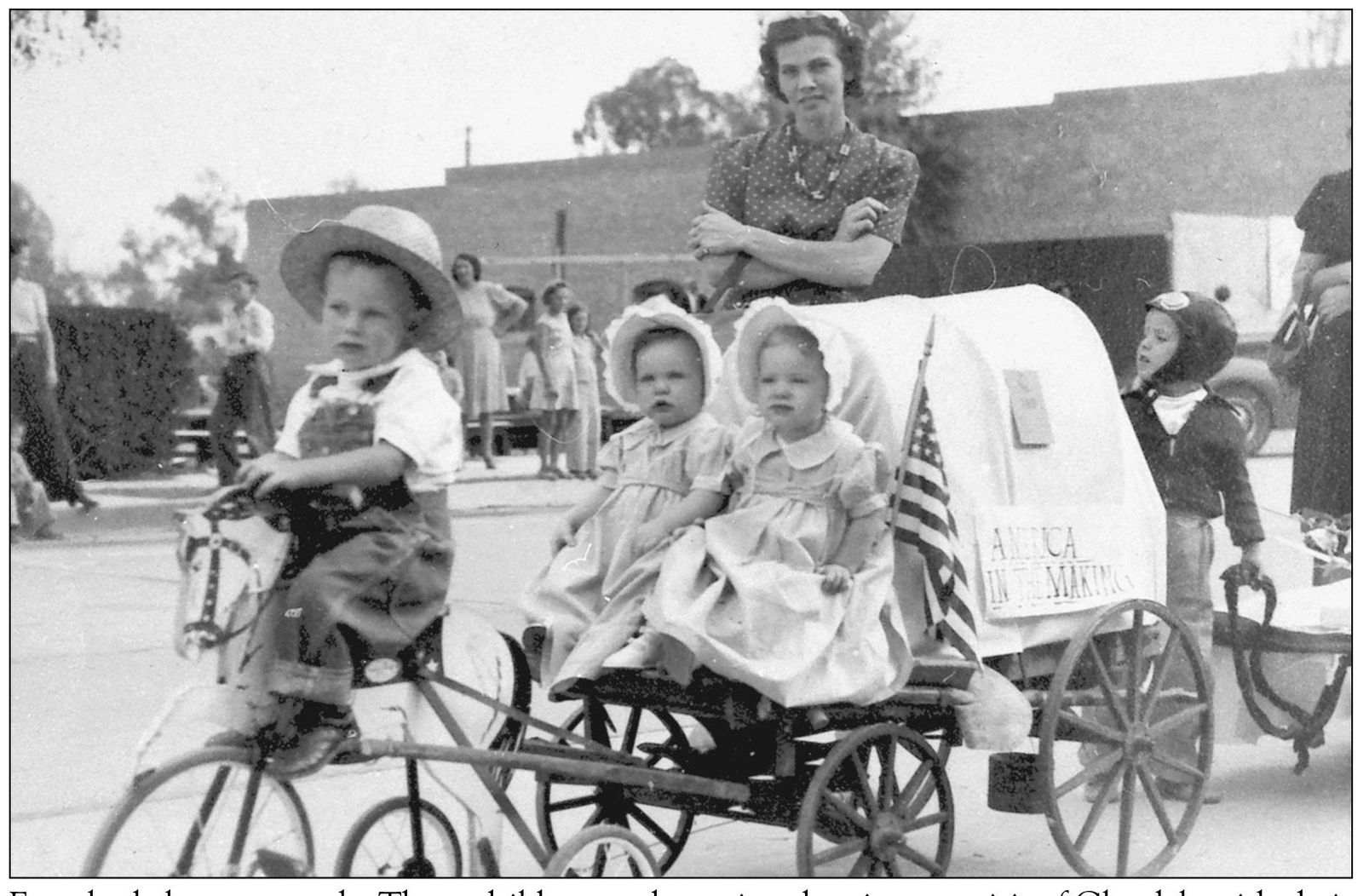
Everybody loves a parade. These children are honoring the pioneer spirit of Glendale with their covered wagon entry in a 1941 parade rolling east along Glendale Avenue. Watching over the youngsters is their mother, Opal Peck. The boy on the tricycle is William “Billy” Peck; the girls are twins, Martha (left) and Mavis Peck; and behind the pioneers’ covered wagon, leading the next entry, is Dale Smith wearing an aviator’s cap.

Glendale’s first motel, the Kiser Motor Court on Grand Avenue, was built in 1940. Before it opened, a traveler would have to seek lodging in the Hotel Glenwood or go to one of the campgrounds or tourist courts. The Kiser family sold the motel in the 1950s and the new owners changed the name to Trail’s End Motel. It was sacrificed to the Grand Avenue project in the 2000s. As this image shows, flooding on Grand avenue was a problem shared by many.
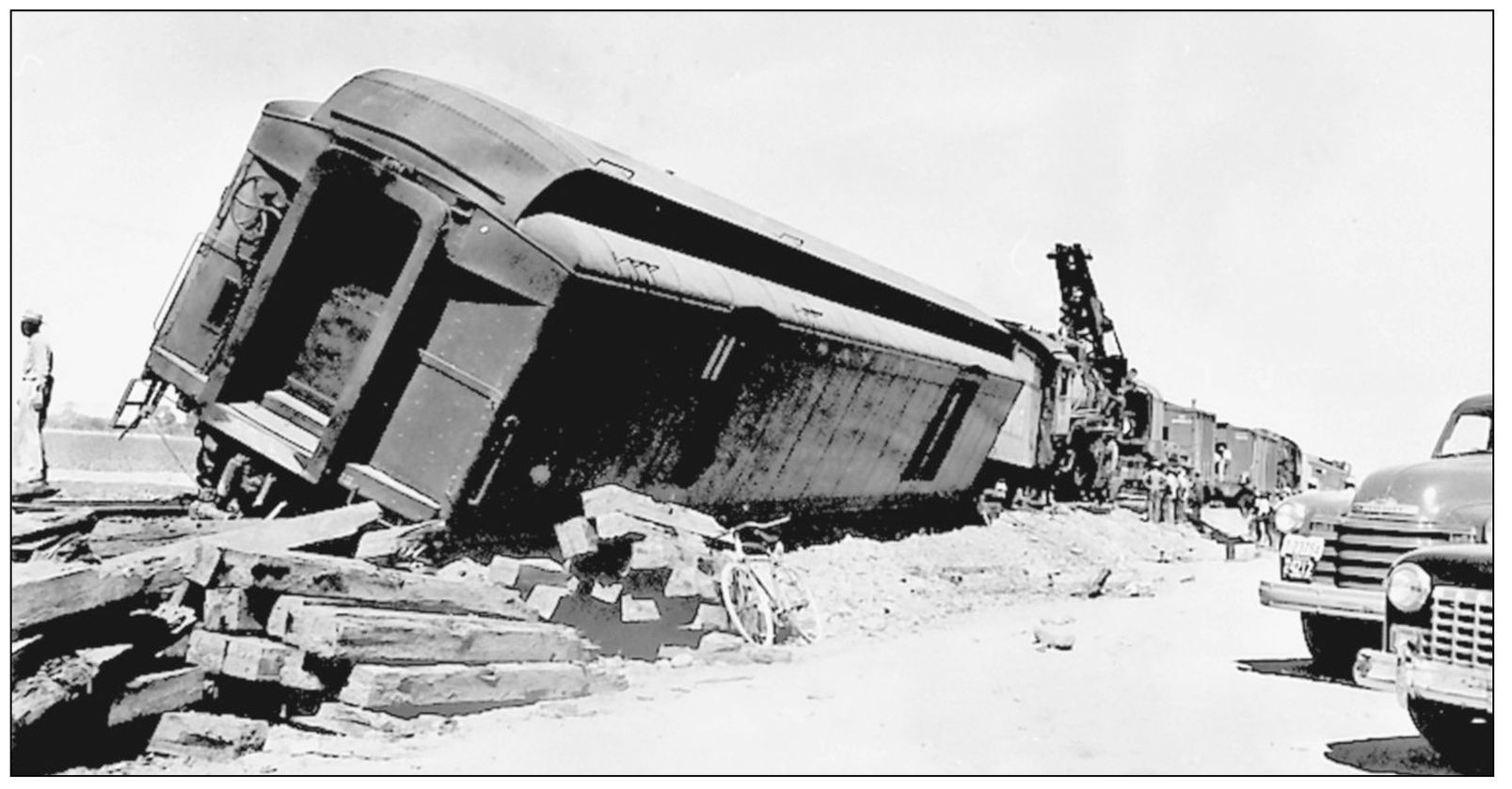
Glendale was not immune to train wrecks. In the 1940s, there was heavy rail traffic on the Santa Fe through town, which increased the likelihood of a mishap. The image above shows a rail-mounted crane at work lifting a derailed car just west of downtown. The image below records what usually happens when train and car meet—the car loses.


In the early 1940s, if one stood at the six-points intersection at Central, Glendale, and Grand Avenues looking south along Central (Fifty-ninth) Avenue, on the far left would be seen the Crystal Ice Company plant and the City of Glendale’s water tower. On the right are weeds and tall grass along Lateral 18, an open ditch at the time. North of the intersection, townsfolk used wooden footbridges to cross the open waterway. After World War II, the lateral was enclosed.
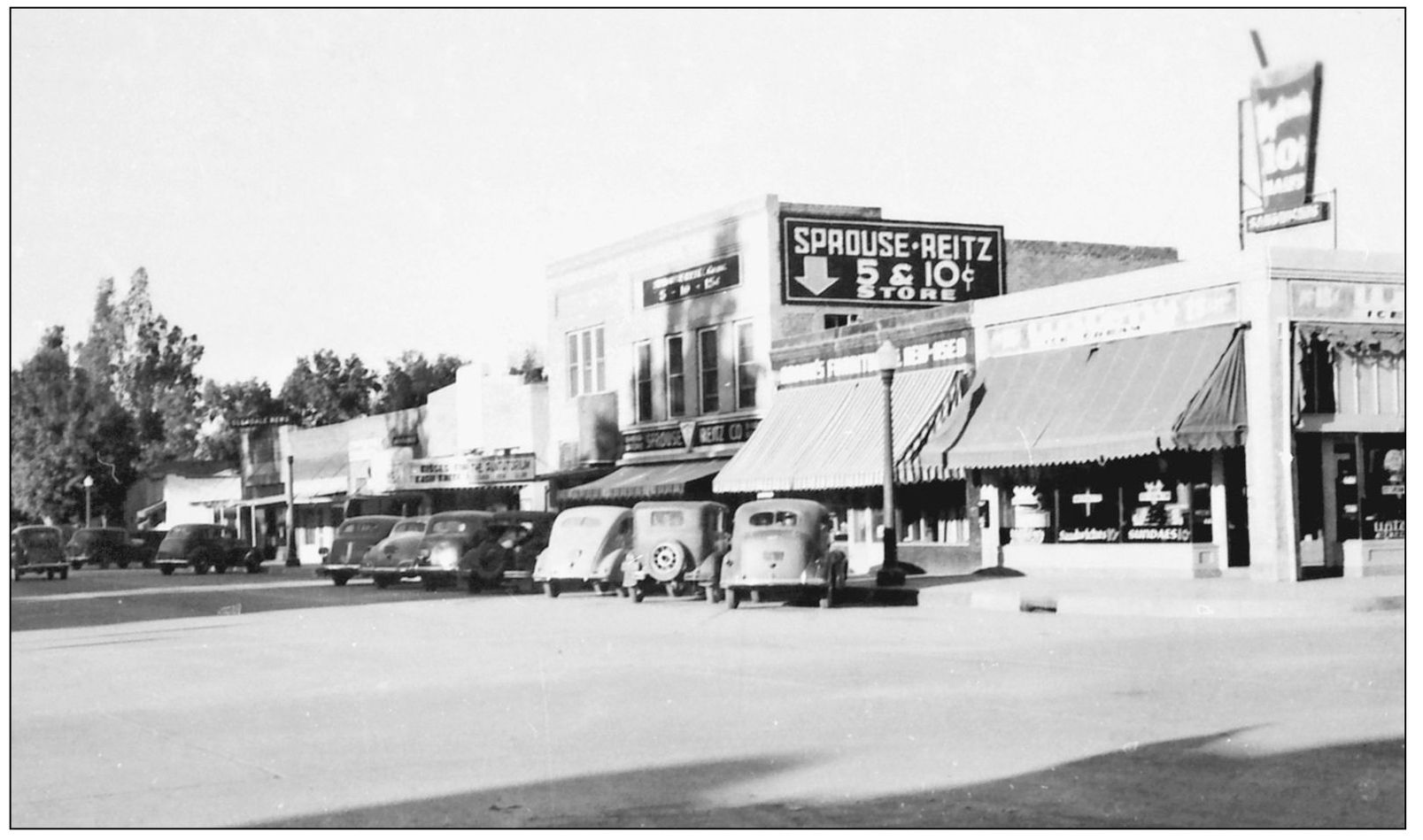
Upton’s Ice Cream Parlor (corner store on right) was a popular place to go after seeing a picture show at the El Rey Theater, which was just a few doors away. In the 1940s, a popular waitress at Upton’s was Marizona Baldwin. One of her loyal admirers told his friends that he was going to marry her some day. In 1948, Martin Robinson, better known as country music star Marty Robbins, did what he said he would. He married her.

Throughout World War II and for many years after, the Standard station attendants dispensed less-than-a-quarter-a-gallon gasoline, changed oil, and lubricated cars. The station was located on one of the corners where Grand Avenue, Lateral 18 (Fifty-ninth Avenue), and Glendale Avenue intersect. The corner once was the home of one of Glendale’s first service stations, the Ludden-Gillett Service Station. Today the Municipal Office Complex parking structure occupies the land.

In the 1940s, Joe Whitney is behind the counter of the Brooks and Whitney Auto Parts store. Whitney started in business working for Ray Stauffer in his men’s store. Later, with Victor “Vic” Brooks, he owned a Union Oil Station for a few years before the two purchased the Western Auto store in town. Along with the Western Auto store, the two partners opened their own auto-parts store across the street.
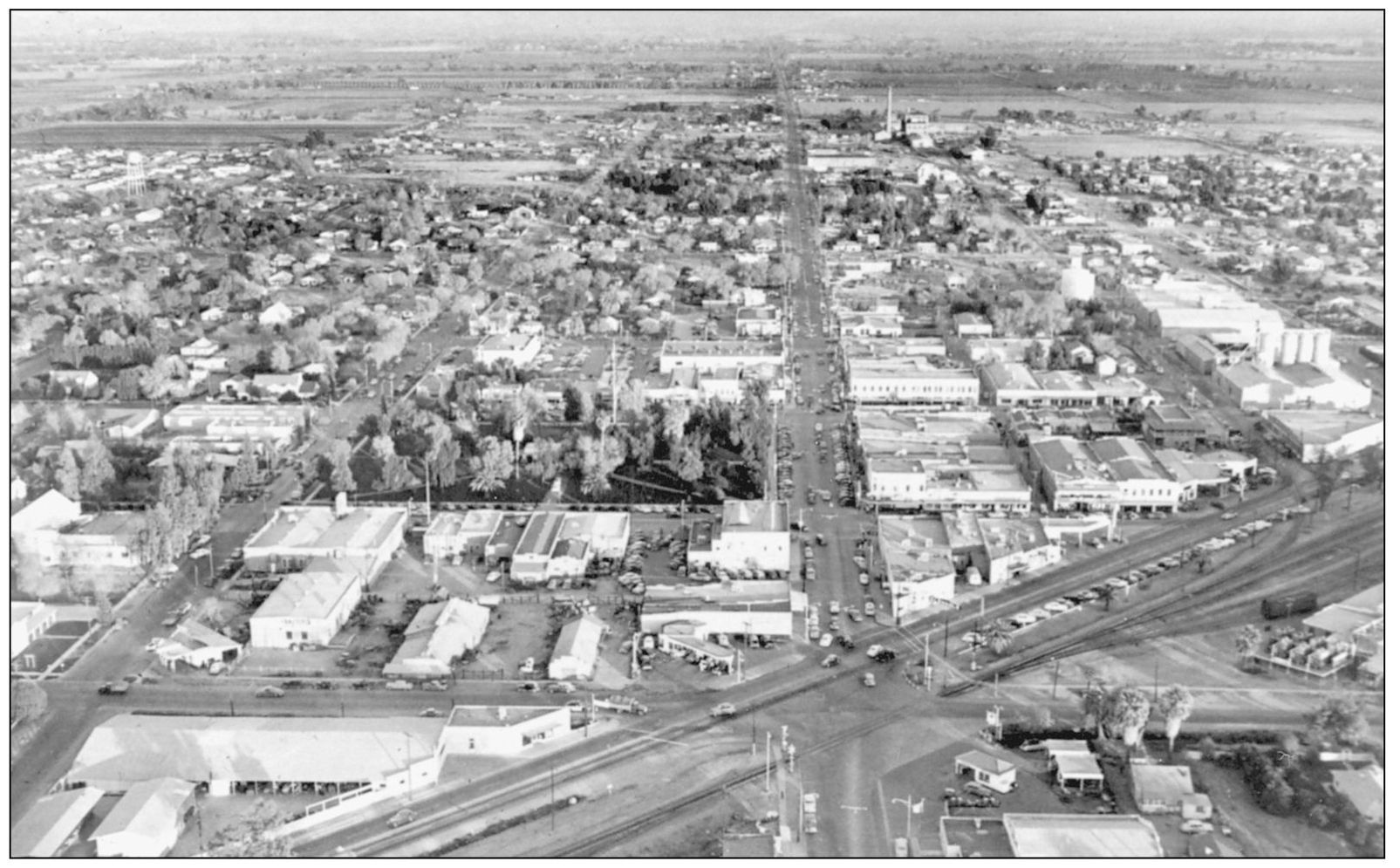
This is downtown in 1950 looking east along Glendale Avenue at the six-points intersection of Grand, Glendale, and Central (Fifty-ninth) Avenues. Grand and the Santa Fe railroad tracks cut diagonally across Glendale Avenue. Trees in the center delineate City (Murphy) Park. On the right are the warehouses and silos of Southwest Flour and Feed Company. The large building in the lower left, on Central Avenue, is O’Malley Lumber Company. The buildings in the block west of the park are gone, replaced in the 1980s by the Municipal Office Complex and parking garage.
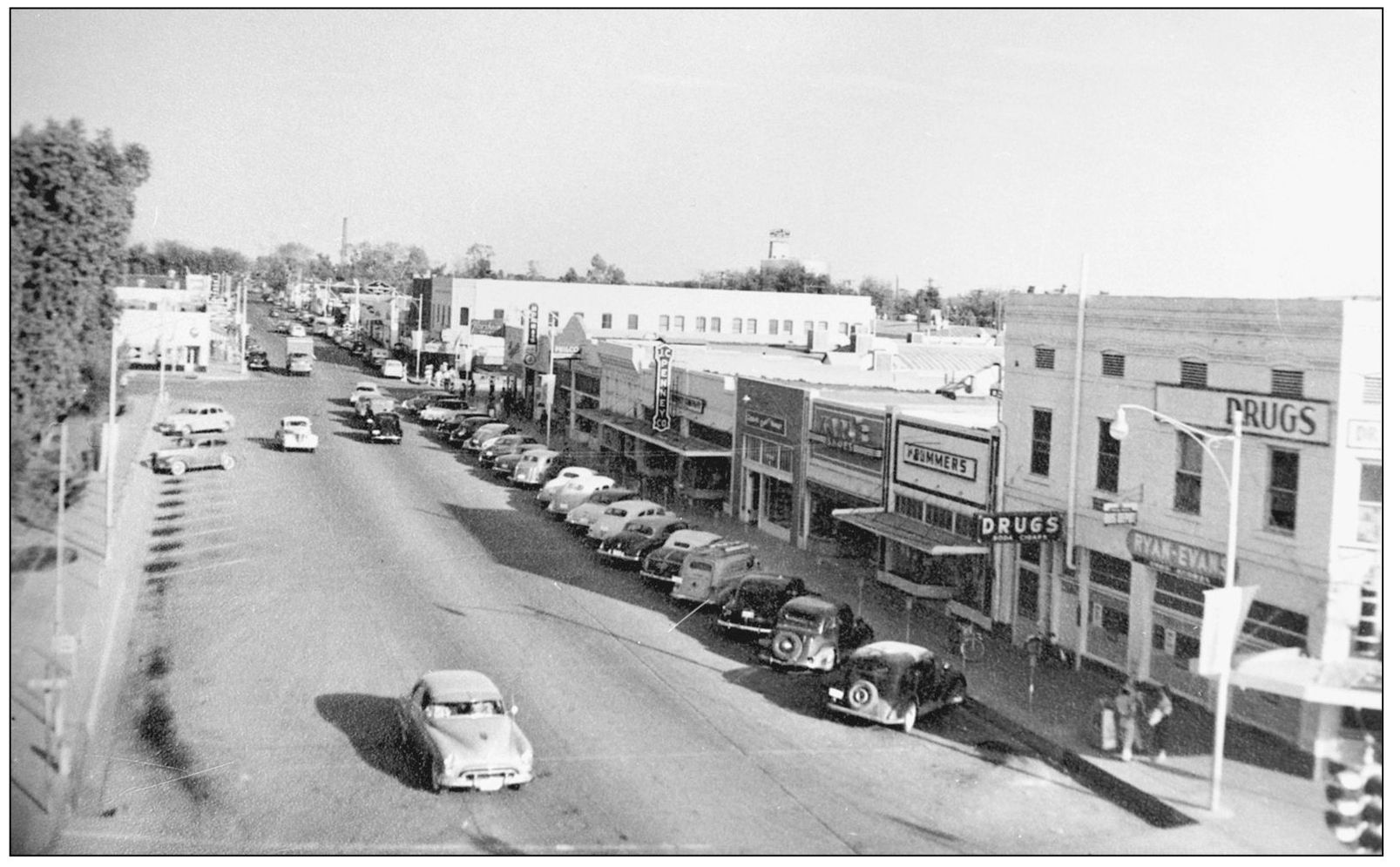
Pictured here is Downtown Glendale, looking east along Glendale Avenue, in 1952. On the right is the Gillett Building, which housed the Ryan-Evans Drug Store. On the left is the edge of City (Murphy) Park.

Facing Glendale Avenue (lower right to middle left), the Glendale Union High School plant is seen in the center of the image. Downtown Glendale is half a mile to the east (right). To the west (left) and in the distance are farm fields in this 1950 image. Today the fields are gone, having been turned into residential and business developments.
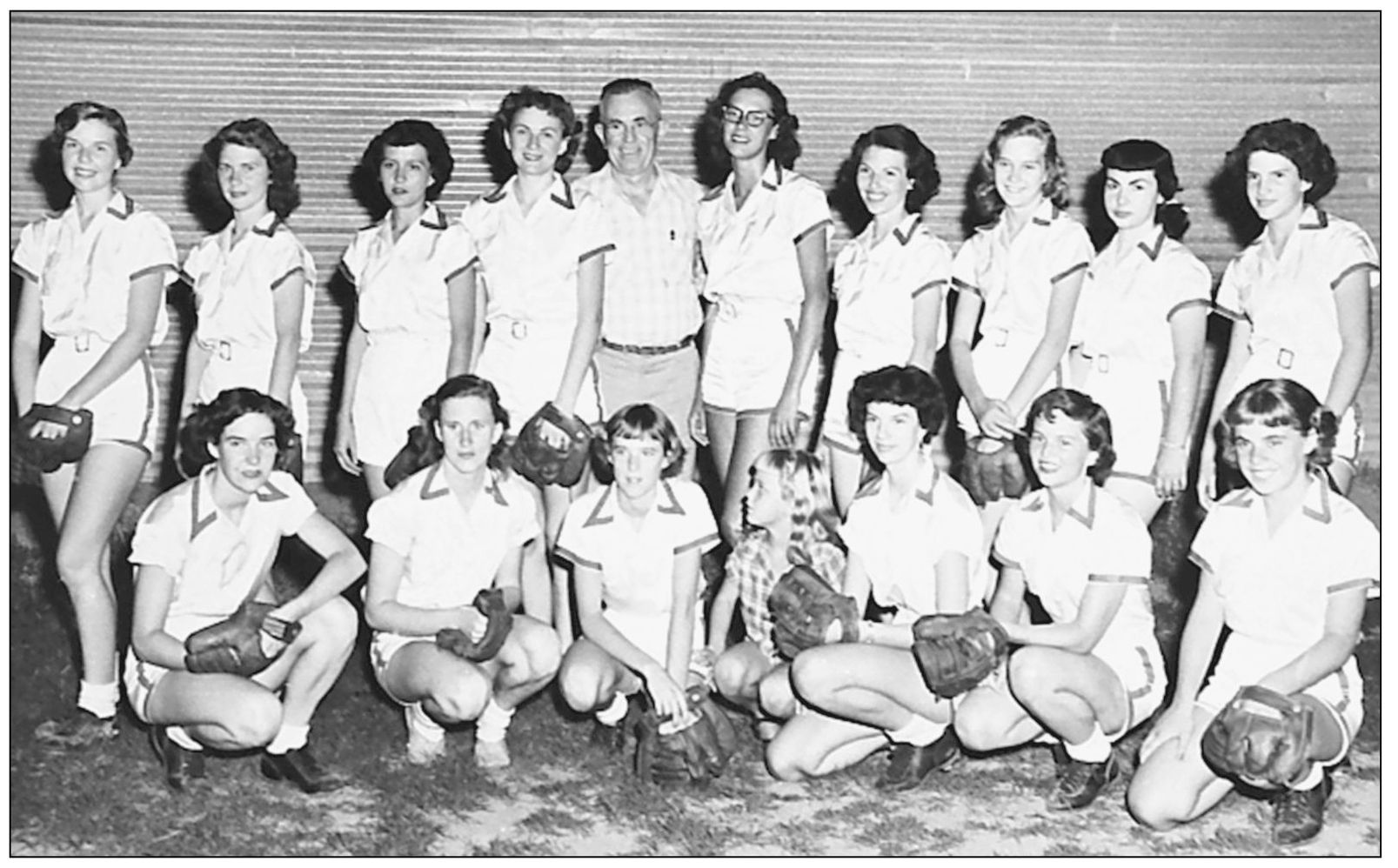
Girl’s softball was popular in the 1940s and 1950s. Local businessmen sponsored teams that they frequently named according to their business. Thus when the Glendale Hatchery sponsored a team it was called the Chicks. The Chicks became Webster’s when Webster’s Creamery assumed sponsorship. Poston’s Tillage sponsored the Sweethearts for several years. In July 1951, the undefeated Webster’s team proudly poses for their picture.

In 1954, John F. Long began building a master-planned community on land south of Glendale. He named his development “Maryvale” after his wife, Mary Tolmachoff Long. He used mass-production techniques to construct thousands of houses over the years. In 1961, Glendale annexed 4.4 square miles of unincorporated Maryvale, thereby extending the city’s southern border by one and a half miles and nearly doubling its land area and population.
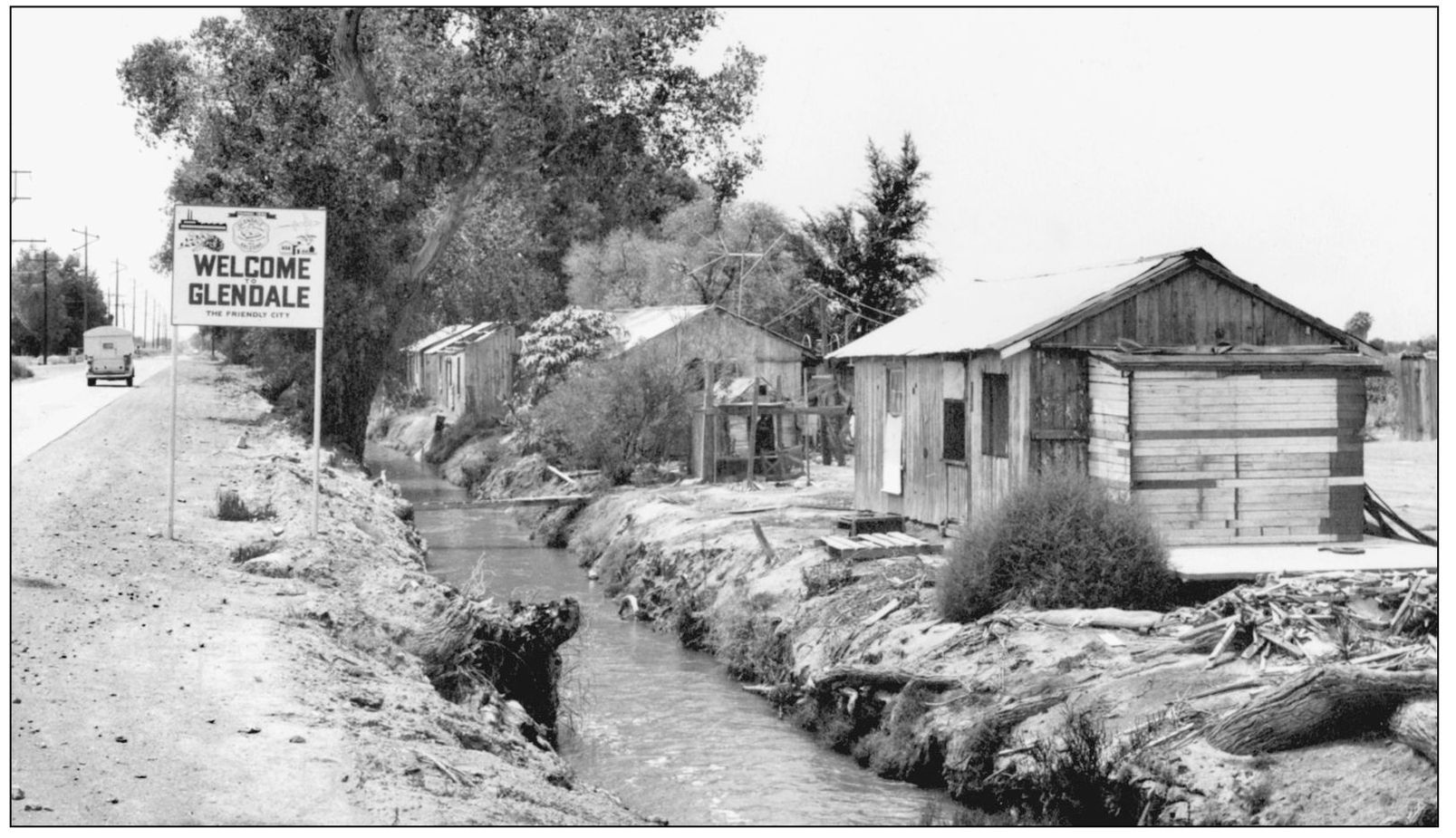
A typical earthen irrigation ditch flows past several run-down shacks on a farm at Olive Avenue and Lateral 16 (Forty-third Avenue) just outside of Glendale. These and other shacks like them throughout the Valley were used as temporary homes by itinerant farm laborers during harvest season. Living conditions were most primitive. Although the accepted norm in the 1950s, such accommodations are not tolerated today.

Irrigating fields in the Valley required diverting water from the Arizona Canal down laterals to irrigation ditches on the farm or ranch property. Early ditches were dug by hand. Later horse-drawn or tractor-drawn machinery was used to make ditches. The more-sophisticated ditches were lined with concrete. In 1950, on a farm west of Glendale, lining an irrigation ditch required several men and machines to complete the job. A lead truck pulled a “cement boat” that was supplied with concrete by a string of transit-mix trucks. The concrete flowed out the bottom and sides of the “boat” to line the earthen ditch. Once the ditch was in use, wood or metal check gates were used to control the flow of water into a field. Usually fields were watered once a month in the winter and twice a month in the summer.

Thunderbird Park is located 10 miles north of downtown Glendale in the Hedgepeth Hills. It started as a 10-acre Glendale Woman’s Club project in the late 1940s, but soon it mushroomed into a 1,000-acre park with plans for an amphitheater, picnic ramadas, hiking trails, and baseball diamonds. In 1952, the city leased the land from the U.S. Bureau of Land Management for 1.5¢ per acre per year. Over the next few years, the entire community, including volunteers from Luke Field (above), pitched in to develop the park. Road graders (below) improved access to the park, and picnic areas, hiking trails, and an amphitheater were built. In 1956, the Bureau of Land Management offered the parkland to the city for $3 per acre. The Rotary Club of Glendale took up the challenge to raise the money, which it did in a week’s time.
